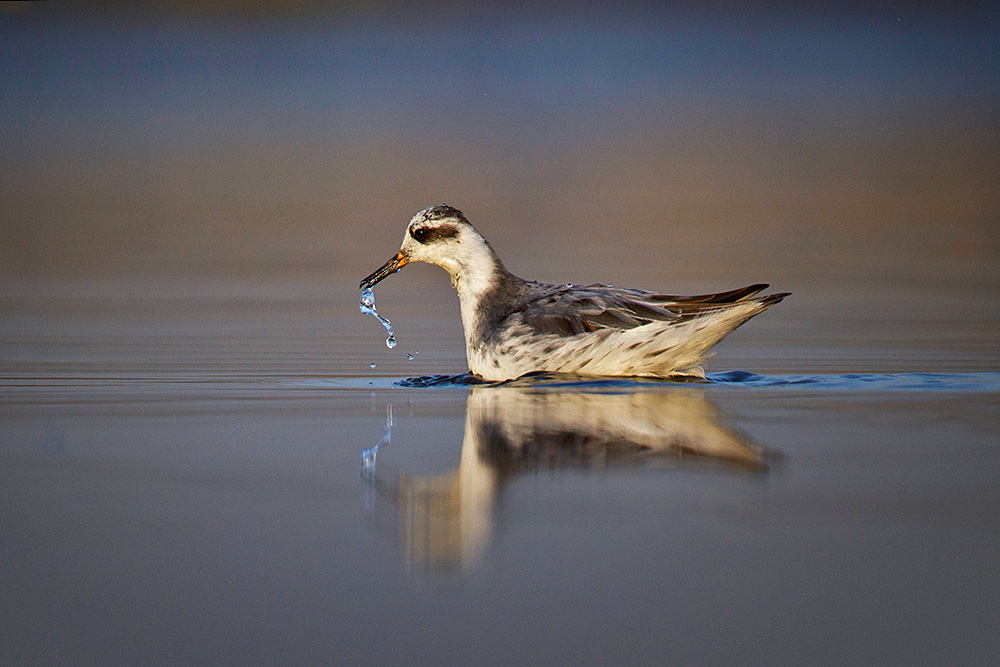 "
"
With winter drawing to a close and with it the peak birding season, the weekends are spent in trips to easily accessible birding spots around Mumbai. The last Sunday of March 2016 however brought different tidings – a Red Phalarope had been spotted in Bhigwan, around 250 kms away from Mumbai. A vagrant to beat all rare vagrants!
The Red or Grey Phalarope (Phalaropus fulicarius) is a small wader in the Sandpiper family. It breeds in the Arctic and winters in the Southern Oceans, rarely seen inland unless pushed in by a storm. Maybe the rain the previous week had caused it to veer off course.
Arriving at 6:30am at Agnipankha Flamingo Point in Kumbhargaon village near Bhigwan (On the Pune Solapur Highway) we met young Mahadev, a bird-guide-cum-boatman. He seemed pretty confident that we would see the bird. We weren’t quite so sure, and as we reached the waterbody, we encountered another problem – no boats. All boats had been engaged. We pinched a fisherman’s rickety old piece and set out with water slushing around our feet and a prayer playing on our lips.
A short ride away, we saw a few boats parked along the shore and Mahadev rowed us there. We got off to see quite a few people shooting a small wader in a shallow pool just off the main waterbody. We duly joined the throng, observing and clicking this amazing little bird, and wondering where he came from and why he’s here. We left him to feed in peace and rowed back, marveling at our luck.
While the Red Necked Phalarope is a (slightly) more common visitor to our shores, the Red Phalarope is seldom seen. Here is an earlier sighting of the bird in India: Red Phalarope, a Rare Vagrant for India, Tal Chhapar, Rajasthan.
About Bhigwan – located just off the Pune-Solapur highway (NH9), Bhigwan is a spectacular spot for waders in winter, mainly known for its flamingos. Sandip Nagare is the resident expert and bird guide and he arranges boats and guides.

 CI is a non-profit, non-commercial portal that aims to facilitate wildlife and nature conservation by providing reliable information and the tools needed to campaign effectively.
CI is a non-profit, non-commercial portal that aims to facilitate wildlife and nature conservation by providing reliable information and the tools needed to campaign effectively.



Chosen as 'Picture of the Week'
Red Phalarope is a rare vagrant to the Indian subcontinent and this is only the 5th or 6th record. The first record was a specimen collected by Edward Blyth in Kolkata in May 1846. The next record was not until August 1987 from Rawalsar lake in Pakistan. The other records are from Rajasthan.